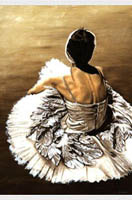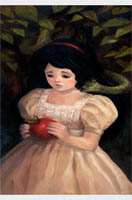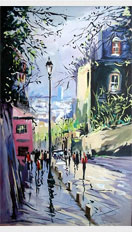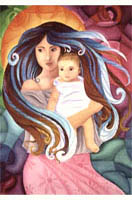Oil painting -> List of Painters -> Albert Edelfelt
EARLY DAYS:
Albert Edelfeldt was a Finnish painter known for his Realist works in the style of the Finnish National Romanticism. He was born in Porvoo, Finland in 1854, and grew up in a family of artists, with his father being a sculptor and his mother a drawing master. He began his studies in the Drawing School of the Finnish Art Society in 1869 and continued his education at the Antwerp Academy of Fine Arts in 1873, where he was heavily influenced by the works of the Dutch Masters.
Edelfelt's works are characterized by a strong sense of realism, and he is known for his portraits and genre scenes. He was also a skilled landscape painter, often depicting scenes of the Finnish countryside and its people in a realistic style. He was one of the few artists of the time to use photographs as references for his paintings.
In 1878, Edelfelt returned to Finland and began to exhibit his works in the Finnish Art Society's annual exhibition. His works were soon noticed by the public and he quickly gained popularity, becoming one of the most renowned painters in the country. He was also appointed as a professor at the Finnish Art Society in 1886.
Edelfelt's works were highly influential, and they inspired a new generation of Finnish artists. He was also a great supporter of the Finnish national movement, often painting scenes of Finnish landscapes and everyday life. His most famous work is probably the large portrait of Swedish-Finnish author and statesman Johan Ludvig Runeberg, which is now considered a national symbol of Finland.
Edelfelt was also a great patron of the arts, and he was the founder and first director of the Ateneum Art Museum in Helsinki in 1887. He was also involved in the founding of the Finnish Art Society and was a member of the council of the Finnish Artists' Association.
Edelfelt died in 1905 in Helsinki, Finland. He was buried in the Hietaniemi cemetery, and his grave is marked by a bronze bust created by his father. He left behind a large body of work, including portraits, landscapes, and genre scenes, which are now among the most beloved works in Finnish art history.
Albert Edelfelt is one of the most important figures in Finnish art history. His works are a testament to the realism and naturalism of the Finnish National Romanticism movement, and his works are still admired and celebrated today. His influence on the next generation of Finnish artists is undeniable, and his legacy continues to be remembered and celebrated in Finland.
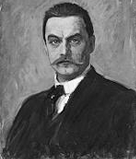
Personal Details:
CAREER:
Albert Edelfelt began his artistic career at the age of 15 when he attended the Drawing School of the Finnish Art Society. Edelfelt was strongly influenced by the Romantic movement of the time, and he often depicted historical scenes in his paintings. He also had a strong interest in landscape painting, and often depicted scenes of the Finnish countryside.
In 1873, Edelfelt moved to Paris to further his artistic studies, and he quickly made a name for himself in the Parisian art scene. He attended the Académie Julian and studied under the French painter Jean-Léon Gérôme, who was a major influence on Edelfelt's work. He also developed a close friendship with the Danish artist Peder Severin Krøyer, who was one of the leading members of the Skagen painters. During his time in Paris, Edelfelt was introduced to the works of the French Realist painters, and this had a major influence on his own style.
In 1876, Edelfelt returned to Finland, and he quickly became one of the country's leading artists. He was appointed Professor of Painting at the Finnish Art Society, and he also became the first Finnish artist to be awarded the prestigious Finnish Order of the White Rose. During this time, he became known for his portraits of famous figures from Finnish society, such as the President of the Republic Carl Gustaf Mannerheim. He also painted a number of scenes from Finnish history, such as the Battle of Porrassalmi, which depicted a major battle between the Swedes and the Russians during the Finnish War of 1808-1809.
In 1885, Edelfelt moved back to Paris and he quickly became a leading member of the Finnish expatriate community. He was a regular visitor to the salons of the day, and he was a prominent member of the Société des Artistes Français. He also held a number of exhibitions in Paris, and his works were well-received by the French art world.
Edelfelt continued to be a major figure in the Finnish art scene until his death in 1905. His works had a major influence on the development of Finnish art, and he is remembered today as one of the most important Finnish artists of the 19th century. He was a major proponent of the Finnish National Romantic style, and his works remain highly sought-after by collectors and art enthusiasts alike.
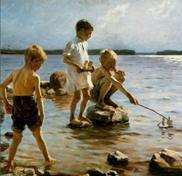 |
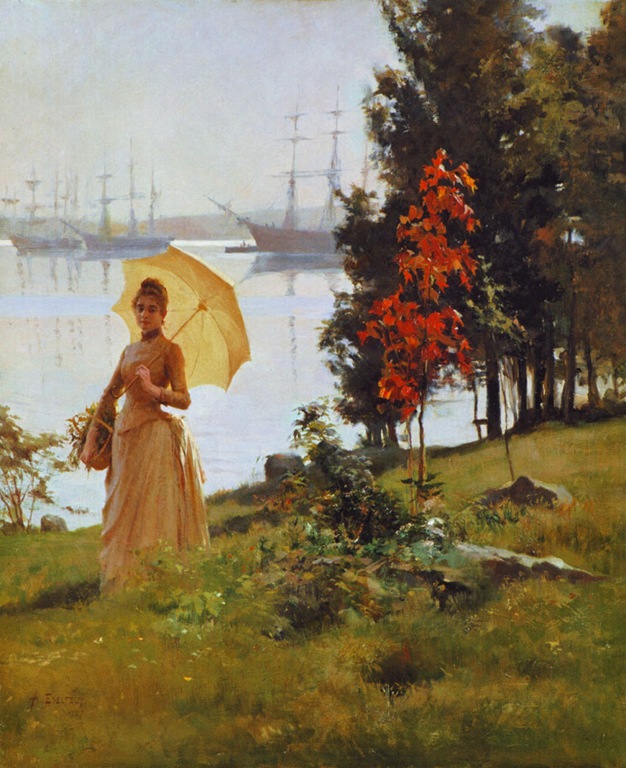 |



